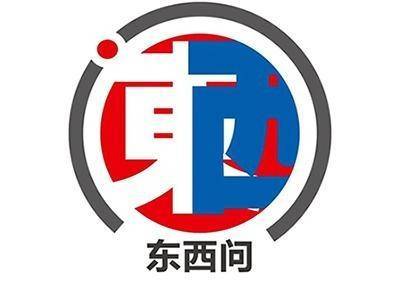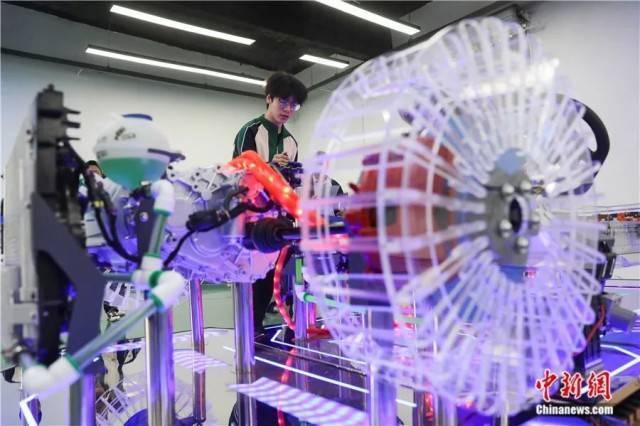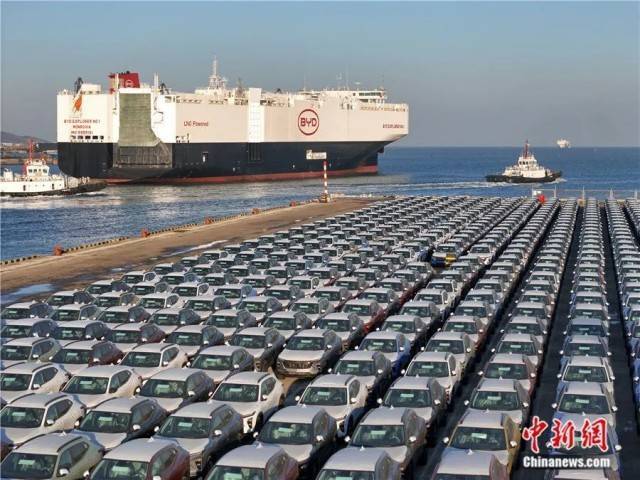秒词邦
分题型分考点背单词 文
文 文
文
中新社北京5月20日电 题:为什么说不存在所谓“中国产能过剩”问题?
作者 李大伟 中国国家发改委宏观经济研究院研究员

近期,美国部分政客频繁向媒体表示,中国出口的新能源汽车、动力电池等新能源类产品存在着严重的“产能过剩”,并向全球持续输出“过剩产能”,对全球经济的正常运行造成了“威胁”。
事实上,不管从产能过剩的内涵入手,还是基于全球视角、历史视角分析当前中国新能源产业发展情况,都可以得出一个结论:不存在所谓“中国产能过剩”问题。
绝对的供需平衡是不存在的
在经济学中,供需平衡是一种理想状态。在实际经济中,由于市场需求是不断改变的,其信号传导到生产者存在时滞,生产者调整产能也存在时滞。因此,供给变化和需求变化完全同步是非常困难的,供给恰好等于需求是偶然的、瞬时的现象,供需不平衡才是普遍现象。动态地看,瞬时的供需不平衡将会引导供给方和需求方不断改变决策,共同向供需平衡状态不断优化调整。因此,供需平衡是相对的,不平衡是普遍的。局部的、短期的供需不平衡和整体的动态平衡不但不存在矛盾,而且是辩证统一的。
同时,从产业生命周期理论来看,新兴产业在发展过程中,更容易出现供需关系剧烈波动的现象。在新兴产业进行技术积累和市场培育的初级阶段,由于相关产品和服务技术尚未完全成熟,企业家对未来产业发展前景的判断也存在差异,这一阶段供给往往不能满足需求。然而,一旦技术积累和市场培育阶段基本结束,企业家普遍认可了相关企业的巨大市场潜力,则会普遍加大投资、新增产能,导致产能规模在某个时间点超过当时的需求。但这种现象是阶段性的,随着市场需求持续扩大和市场机制持续发生作用,供求关系会自发调整并归于动态平衡,有竞争力的企业和优质产能逐渐脱颖而出,新兴产业也进入成熟期。综上所述,把市场经济中普遍存在的“供需不平衡”曲解为“产能过剩”是明显错误的。

学生参加新能源汽车整车操作项目比赛。何五昌 摄
中国新能源产能的核心优势是技术创新
那些炒作之声认为,中国的新能源汽车等产业主要依靠政府补贴的低价优势“挤占”国际市场。这种观点完全错判了中国新能源产业的核心竞争力。
中国新能源汽车等产业之所以具有较强的全球竞争力,有工业体系和供应链网络更为完善高效的原因,也有国内统一大市场的规模经济效应的原因,但最主要的原因是把握住了新一轮技术革命和产业变革的有利时机,进行了高水平的颠覆性创新。按照著名经济学家熊彼特的创新理论,这类颠覆性创新将对原有体系产生一种“创造性破坏”,也就是推动新商品、新技术路线、新组织方式取代旧商品、旧技术路线、旧组织方式。
由于这种“创造性破坏”需要摆脱对传统技术路径的依赖,因此往往会催生一批新兴企业以取代传统企业。比亚迪、特斯拉等现代车企取代传统燃油车企,和苹果、华为手机取代诺基亚手机,佳能、尼康相机取代柯达相机一样,都是这一理论的典型写照。比亚迪及其上游的宁德时代等企业的产品之所以得到发达经济体消费者青睐,是由于相关产品的技术和设计理念,更加符合世界各国消费者的个性化、绿色化需求。
因此,中国的新能源产能是在市场机制有效作用下,在全球良性竞争和合作过程中逐步发展形成的优质绿色产能,在一定程度上引领了相关产业的未来发展方向。
和美国、英国、印度等经济体相似,中国基于创新经济学有关理论,以及充分考虑到新能源产品应用具有一定外部性,同样采用了实施高新技术企业所得税税率、研发费用加计扣除,鼓励居民消费等一系列创新激励政策。这些政策完全符合创新经济学的基本原理,既有利于鼓励企业加大创新力度,也有利于有效应对温室气体排放等外部性问题,根本不是所谓“扭曲市场的补贴”。
实际上,美西方针对中国新能源产品的限制和打压,以及针对少数企业提供专项性的资金支持,才是真正扭曲市场的做法,已经严重影响了全球产业链。
全球新能源产品供不应求
从未来全球市场需求潜力来看,目前不但中国,甚至全球新能源产品供给都是不足的。以新能源汽车为例,据国际能源署测算,2030年全球新能源汽车需求量将达4500万辆,是2022年的4.5倍。据机构测算,2030年全球乘用车市场规模预计超过8000万台,其中新能源汽车渗透率将达50%左右。当前的产量和全球潜在市场需求存在较大差距。

中国车企五菱在印尼雅加达发布新款新能源汽车。李志全 摄
把出口歪曲为输出“过剩产能”是巨大谬误。将面向全球市场需求出口等同于输出“过剩产能”,可以说是违背了经济学的最基本理论——国际分工理论。亚当·斯密、大卫·李嘉图早在数百年前就提出了国际分工的概念。随着全球化深入发展,不同国家在不同商品或服务的生产中具有各自比较优势,因此出口自身具有相对比较优势的产品,进口自身具有相对比较劣势的产品,并通过国际贸易实现总收益最大化,这一理论已经成为经济学常识。

2024年1月10日,装载着新能源汽车的“比亚迪开拓者1号”从山东烟台港启航。唐克 摄
如果出口就是所谓“输出过剩产能”,那么所有国家都在某些产品上实现净出口。如美国就在2023年出口了209亿立方英尺的天然气,是否说明美国正在向世界输出天然气的“过剩产能”呢?事实上,在全球化高速发展的背景下,无论中国企业还是美国企业,均根据全球市场需求决定自身产能,只是有的企业更注重国内市场,有的更注重国际市场。因此,出口占产量的比重和是否存在国内产能过剩没有任何关系。
中国新能源产业对世界经济增长和绿色转型发挥了重要作用。从经济视角看,中国新能源产业生产大量消费品满足了本国乃至其他国家需求,从消费端拉动世界经济增长;生产了大量设备和零部件并出口,为其他国家投资制造业并开展加工制造奠定了物质基础,从投资端拉动经济增长。从绿色发展视角看,中国出口的新能源产品无论用于消费还是投资,都帮助合作方实现了对传统化石能源的替代,为全球减少温室气体排放作出了巨大贡献。(完)
受访者简介:

李大伟,中国宏观经济研究院对外经济研究所新兴经济体研究室主任,研究员。长期从事国际经济形势、国际贸易、对外直接投资、区域经济合作等领域研究工作,参与出版著作近20部,在学术期刊和主流媒体发表论文80余篇。
新闻译文:
Beijing, May 20th (China News Agency) - Why is there no such problem as "overcapacity in China"?
Author Li Dawei, Researcher at the Macroeconomic Research Institute of the National Development and Reform Commission of China
Recently, some politicians in the United States have frequently expressed to the media that there is a serious "overcapacity" in China's exports of new energy products such as new energy vehicles and power batteries, and that it continues to export "overcapacity" to the world, posing a "threat" to the normal operation of the global economy.
In fact, whether starting from the connotation of overcapacity or analyzing the current development of China's new energy industry from a global and historical perspective, a conclusion can be drawn: there is no such problem as "overcapacity in China".
There is no absolute supply-demand balance
In economics, supply-demand balance is an ideal state. In the actual economy, due to the constantly changing market demand, there is a time lag in the transmission of signals to producers, and there is also a time lag in the adjustment of production capacity by producers. Therefore, it is very difficult to completely synchronize changes in supply and demand. Supply is just equal to demand, which is an accidental and instantaneous phenomenon, and supply-demand imbalance is the common phenomenon. From a dynamic perspective, the instantaneous supply-demand imbalance will guide both the supply and demand sides to constantly change their decisions and jointly optimize and adjust towards the supply-demand balance state. Therefore, supply-demand balance is relative, and imbalance is common. The local and short-term supply-demand imbalance and the overall dynamic balance not only do not have contradictions, but are also dialectically unified.
Meanwhile, from the perspective of industry lifecycle theory, emerging industries are more likely to experience drastic fluctuations in supply and demand during their development process. In the initial stage of technology accumulation and market cultivation in emerging industries, due to the incomplete maturity of related product and service technologies, entrepreneurs also have different judgments on the future development prospects of the industry. In this stage, supply often cannot meet demand. However, once the stage of technology accumulation and market cultivation is basically completed and entrepreneurs generally recognize the huge market potential of the relevant enterprises, they will generally increase investment and add new production capacity, resulting in the production capacity scale exceeding the demand at a certain point in time. But this phenomenon is periodic. As market demand continues to expand and market mechanisms continue to take effect, the supply and demand relationship will spontaneously adjust and return to dynamic equilibrium. Competitive enterprises and high-quality production capacity will gradually emerge, and emerging industries will also enter a mature period. In summary, it is clearly incorrect to misinterpret the commonly existing "supply-demand imbalance" in a market economy as "overcapacity".
Students participate in the competition for new energy vehicle operation projects. Photo by He Wuchang
The core advantage of China's new energy production capacity is technological innovation
Those who speculate that China's new energy vehicle and other industries mainly rely on the low price advantage of government subsidies to "squeeze" into the international market. This viewpoint completely misjudges the core competitiveness of China's new energy industry.
The reason why China's new energy vehicle and other industries have strong global competitiveness is due to a more complete and efficient industrial system and supply chain network, as well as the economies of scale of a unified domestic market. However, the main reason is to seize the favorable opportunity of a new round of technological revolution and industrial transformation, and carry out high-level disruptive innovation. according to the innovation theory of renowned economist Schumpeter, such disruptive innovation will cause a "creative destruction" of the original system, which is to promote the replacement of old goods, old technology routes, and old organizational methods with new goods, new technology routes, and new organizational methods.
Due to the need to break free from dependence on traditional technological paths, this "creative destruction" often spawns a group of emerging enterprises to replace traditional ones. modern car companies such as BYD and Tesla replacing traditional fuel powered car companies, as well as Apple and Huawei replacing Nokia phones, Canon and Nikon cameras replacing Kodak cameras, are typical examples of this theory. The reason why the products of BYD and its upstream companies such as CATL are favored by consumers in developed economies is due to the technology and design concepts of related products, which are more in line with the personalized and green needs of consumers around the world.
Therefore, China's new energy production capacity is a high-quality green production capacity gradually developed and formed through effective market mechanisms and global benign competition and cooperation, which to some extent leads the future development direction of related industries.
Similar to economies such as the United States, the United Kingdom, and India, China has adopted a series of innovative incentive policies, such as implementing high-tech enterprise income tax rates, deducting research and development expenses, and encouraging consumer spending, based on theories related to innovation economics and fully considering the externalities of new energy product applications. These policies are fully in line with the basic principles of innovation economics, which are conducive to encouraging enterprises to increase their innovation efforts and effectively addressing externalities such as greenhouse gas emissions. They are not so-called "market distorting subsidies" at all.
In fact, the restrictions and suppression of China's new energy products by the United States and the West, as well as the provision of specialized financial support for a few enterprises, are truly market distorting practices that have seriously affected the global industrial chain.
Global shortage of new energy products
From the perspective of future global market demand potential, not only China, but also the global supply of new energy products is currently insufficient. Taking new energy vehicles as an example, according to the International Energy Agency, the global demand for new energy vehicles will reach 45 million by 2030, which is 4.5 times higher than in 2022. According to institutional calculations, the global passenger car market is expected to exceed 80 million units by 2030, with a penetration rate of about 50% for new energy vehicles. There is a significant gap between current production and potential global market demand.
Chinese automaker Wuling has released a new type of new energy vehicle in Jakarta, Indonesia. Photo by Li Zhiquan
Distorting exports as excess production capacity is a huge fallacy. Equating exports to global market demand with the output of "excess capacity" can be said to contradict the most fundamental theory of economics - the theory of international division of labor. Adam Smith and David Ricardo proposed the concept of international division of labor hundreds of years ago. With the deepening of globalization, different countries have their own comparative advantages in the production of different goods or services. Therefore, exporting products with their own comparative advantages, importing products with their own comparative disadvantages, and maximizing total profits through international trade have become common knowledge in economics.
On January 10, 2024, the BYD Pioneer 1, loaded with new energy vehicles, set sail from Yantai Port in Shandong Province. Tangke Photography
If exports are what we call "exporting excess capacity," then all countries will achieve net exports on certain products. Does the fact that the United States exported 20.9 billion cubic feet of natural gas in 2023 indicate that it is exporting "excess capacity" of natural gas to the world? In fact, in the context of rapid globalization, both Chinese and American companies determine their own production capacity based on global market demand. However, some companies pay more attention to the domestic market and others pay more attention to the international market. Therefore, the proportion of exports to production has nothing to do with the existence of domestic overcapacity.
The new energy industry in China has played an important role in global economic growth and green transformation. From an economic perspective, China's new energy industry produces a large amount of consumer goods to meet the needs of its own country and even other countries, driving global economic growth from the consumer side; We have produced a large amount of equipment and components for export, laying a material foundation for other countries to invest in manufacturing and carry out processing and manufacturing, and driving economic growth from the investment side. From the perspective of green development, the new energy products exported by China, whether used for consumption or investment, have helped partners replace traditional fossil fuels and made significant contributions to reducing global greenhouse gas emissions. (End)
Interviewee profile:
Li Dawei, director and Researcher of the Emerging Economies Research Office at the Institute of Foreign Economics, China Academy of Macroeconomics. Engaged in long-term research in the fields of international economic situation, international trade, foreign direct investment, regional economic cooperation, etc., participated in the publication of nearly 20 works, and published more than 80 papers in academic journals and mainstream media.
不存在 absent ; non-existent ; nothingness
发改委 development and reform commission ; National Development and Reform Commission ; NDRC
宏观经济 Macroeconomics ; macro-economy
研究院 research institute ; academy ; graduate school
政客 politician ; politico
新能源 new energy resources
全球经济 global economy
正常运行 normal operation
事实上 in fact ; actually ; effectively ; as a matter of fact ; really ; in reality ; in practice
供需平衡 Supply and demand balance ; co-ordination of supply and demand
句子成分分析:
Does the fact (that the United States exported 20.9 billion cubic feet (of natural gas) [in 2023]) indicate | that it is
exporting "excess capacity" (of natural gas) [to the world]?
句子语法结构详解:
(feet 为 foot 的复数形式。)
* 助动词 does 引导一般疑问句。
* 第1个 that 为连词,引导同位语从句。
* exported 为谓语,采用一般过去时。
* indicate 为谓语,采用一般现在时。
* 第2个 that 为连词,引导宾语从句。
* exporting 为谓语,采用现在进行时。
* is 为助动词。the 为定冠词。
句子相关词汇解释:
Phrase:
| the United States | 美国 |
| natural gas | 天然气 |
Vocabulary:
| fact [fækt] | n. | 1) 事实,真相 2) 现实,实际情况 |
| export [ik'spɔ:t] | vt. | 1) 出口,输出 2) 传播,输出(思想或活动) |
| vt. | 1) 出口,输出 2) 传播,输出(思想或活动) | |
| cubic ['kju:bik] | a. | 1) 立方的 2) 用立方单位度量(或表示)的 |
| foot [fut] | n. | 1) 英尺 2) 脚,足 |
| indicate ['indikeit] | vt. | 1) 表明,显示 2) 象征,暗示 |
| excess ['ekses] | a. | 超额的,额外的,附加的,过度的 |
| capacity [kә'pæsiti] | n. | 1) 容量,容积,容纳能力 2) 能力 |
| world [wә:ld] | n. | 1) 世界,人类社会 2) 地球,天下 |
句子成分分析:
[From the perspective (of future global market demand potential)], not only China, but also the global supply (of
new energy products) is [currently] insufficient.
句子语法结构详解:
* 句中含有 not only...but also... 并列结构,意为“不但……而且……”。
* is 为系动词作谓语,采用一般现在时。
* insufficient 为形容词作表语。
* the 为定冠词。
句子相关词汇解释:
Phrase:
| but also | 而且 |
| not only...but also... | 不仅...而且... |
Vocabulary:
| perspective [pә'spektiv] | n. | 1) (思考的)角度或方法,态度,观点 2) 透视法 |
| future ['fju:tʃә] | a. | 将来的,未来的,将来发生的 |
| global ['glәubl] | a. | 1) 全球的,全世界的 2) 整体的,全面的,总括的 |
| market ['mɑ:kit] | n. | 1) 市场,集市,商场 2) 交易,买卖,交易量 |
| demand [di'mɑ:nd] | n. | 1) (顾客的)要求,需求,需要 2) (坚决的)要求,请求 |
| potential [pә'tenʃәl] | n. | 1) 潜力,潜质 2) 可能性,潜在性 |
| China ['tʃainә] | n. | 中国 |
| supply [sә'plai] | n. | 1) 补给,供应 2) 储备量,供应量 |
| new [nju:] | a. | 1) 新的,刚出现的,新近推出的 2) (the new)新东西,新事物 |
| energy ['enәdʒi] | n. | 1) 能量 2) 干劲,精力 |
| product ['prɔdʌkt] | n. | 1) 产品,制品 2) (自然、化学或工业过程的)产物,生成物,产品 |
| currently ['kʌrәntli] | ad. | 现时;目前;当前;时下 |
| insufficient [,insә'fiʃәnt] | a. | 不充分的,不足的,不够重要的 |

以上是秒词邦为您整理编写的文章《东西问|李大伟:为什么说不存在所谓“中国产能过剩”问题? ——秒词邦微信小程序》的全部内容。秒词邦是国内权威分题型分考点背诵中高考/四六级考研/专升本/出国单词的专业单词软件。扫描如下小程序码,进入秒词邦官方小程序获取更多英语相关资料! 【关键词:高考单词;高考英语;高中单词;高中英语;单词app;单词软件;记单词app;记单词软件;背单词软件;背单词app;英语单词;四六级单词;四六级英语;四六级单词app;四六级单词软件;考研单词app;考研单词软件;核心单词;高考冲刺复习;高考英语教材;高考英语真题;四六级真题;四六级试题;考研真题;考研英语单词;考研英语真题】





